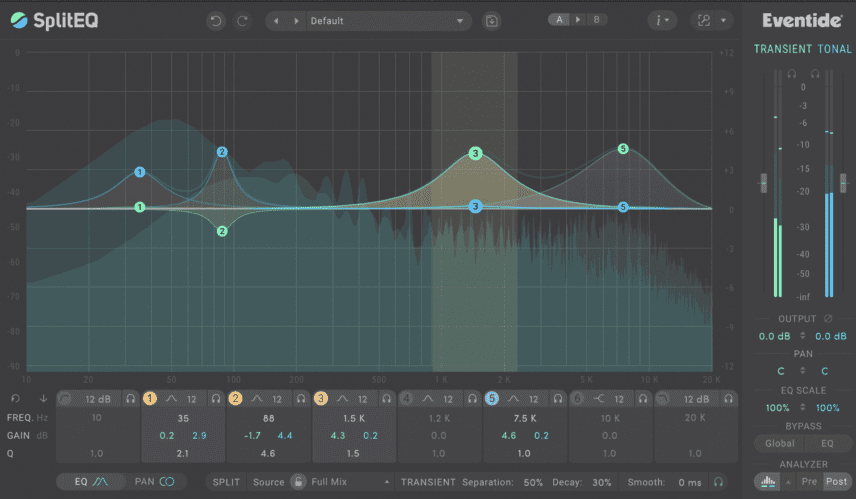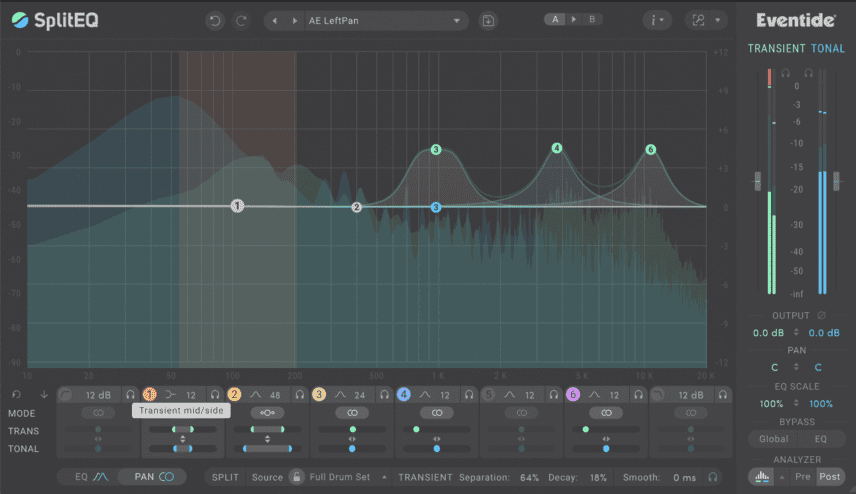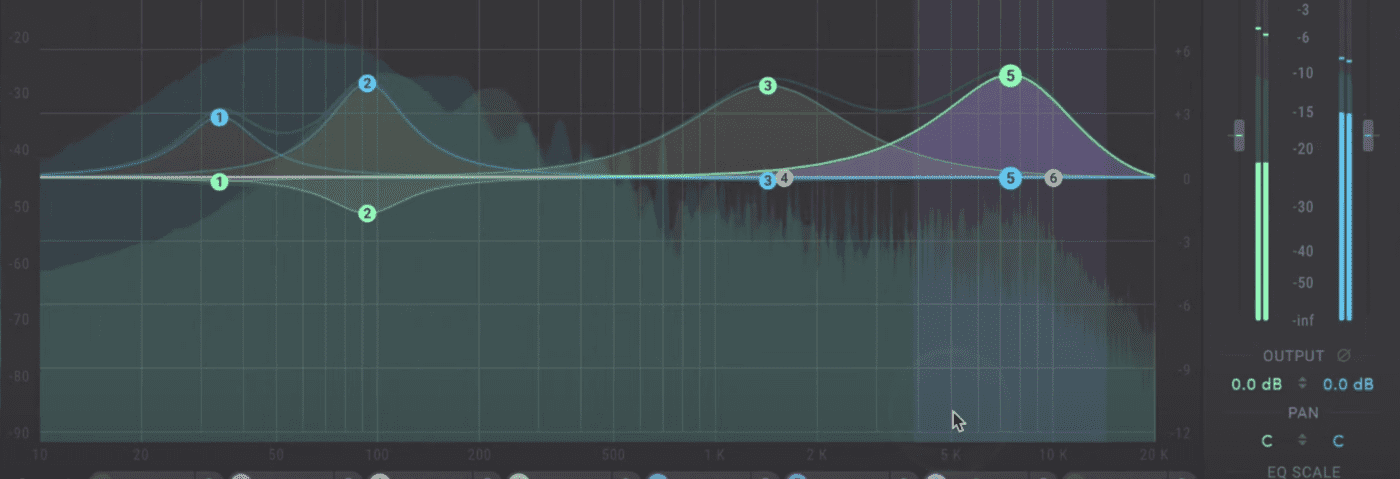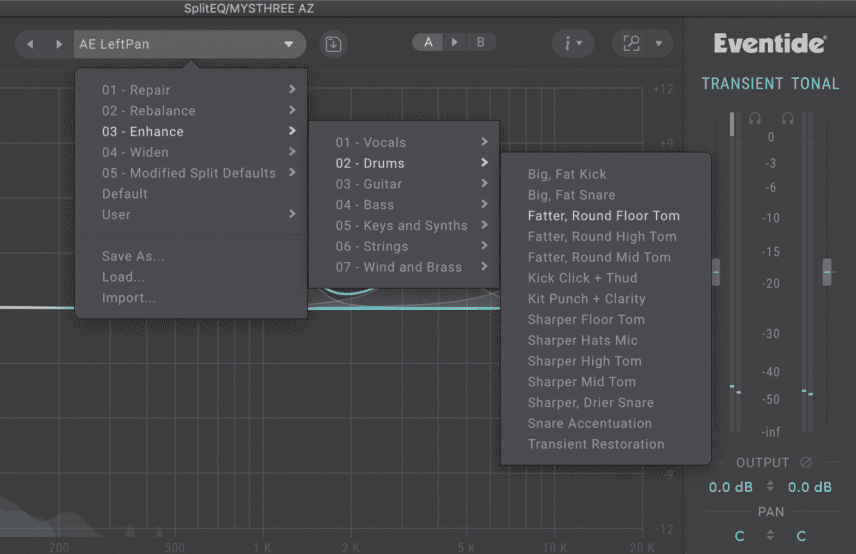Eventide’s new and revolutionary SplitEQ plugin introduces a transient-based approach to EQ. Is this the new horizon for EQ plugins?
New Jersey-based Eventide is celebrating its 50th anniversary this year. Their latest plug-in SplitEQ looks set to make a significant impact on the saturated EQ plug-in market.
Widely known for their high quality digital audio effects units, pedals and their revered plug-in emulations – including the more recent H9 series plug-ins – the company has now shifted attention back to its Structural Effects product line.
These plugins make use of the patented Structural Split technology. This was first introduced in Eventide’s Physion that splits audio into transient and tonal signals. You can then process them separately.
From a mixing perspective, this gives you far greater freedom. You can process transients separately from the rest of the mix in order to add or remove punch. Further creative applications include re-pitching the resonant sound and body of a drum while maintaining its initial snappy transient. Another example is removing pluckiness from parts to create more drone-like effects.
While Physion also comes with effects like chorus, tremolo, phasers, reverb and delay that could be used to creatively process loops, SplitEQ is specifically designed to tackle mixing and mastering-related tasks.
SplitEQ Features
SplitEQ has eight different bands. Each band allows you to choose the type of curve or EQ filter as well as the slope. You can select which frequency the band is set to, the amount of gain you’re adding to either the transient or tonal signals and the width/Q of the EQ filters. Everything related to the transient signal is colour coded in green and everything related to the tonal signal is blue.

.
By clicking on the Pan tab at the bottom left, each band switches to the panning mode. In this mode, you can pan the transients or tonal signals separately. You can also switch each band to Mid-Side mode to increase or decrease the presence of each band in the mono centres or stereo sides. We found that decreasing the stereo image of the low bands added huge weight to the low end with SplitEQ applied to a full mix. At the other end of the spectrum, increasing the stereo width of top-end elements adds snap.

One of our favourite features about the bands is that they each have three headphone buttons – white, blue, and green – that can solo either the whole band or the band’s Transient or Tonal signals.
At the top-right of the plug-in you can solo the whole spectrum’s Transient or Tonal signals by clicking on the green or blue headphone buttons. The Transient section at the bottom has Separation, Decay and Smooth settings that allow you to customize what the algorithm is picking up as transients. The Decay parameter is especially useful for determining the length of the transients.
To the left of the Transient bar is the Split Source bar that allows you to choose from a dropdown list of items like ‘Full Mix,’ ‘Guitar,’ ‘Bass, and ‘Drums’ that will help SplitEQ separate the transients more easily based on the audio source.
Eventide really put the ‘split’ in SplitEQ! Even the analyzer has a mode that shows the analyzer shows the Transient and Tonal elements separately. This, for example, makes it easy to spot where a kick is hitting in the frequency spectrum, compared to bass. The analyzer section at the bottom right is where you can switch between the different viewing options and even freeze the analyzer temporarily.
The comprehensive library of 150 presets designed for specific instruments, vocals and drums help all competency levels to get started.
There are also other useful features like plug-in window re-sizing, two A/B modes and undo/redo buttons that are helpful for your workflow.
Use Cases With Eventide’s SplitEQ
In terms of how to make use of an EQ plug-in that separates Transient and Tonal elements, we especially favoured its application on the whole mix bus as a mastering-style EQ.
One reason for this is that there are numerous high-quality transient shaping plug-ins on the market like Waves’ Smack Attack, Native Instruments’ Transient Master or Plugin Alliance’s SPL Transient Designer Plus and these are able to add punch or snap to individual elements in a mix.
However, the ability to surgically tweak transients in multiple bands is lightyears ahead of what we’ve seen from transient shapers. This is especially useful in the low end of full mixes as you can decrease subs while boosting the punch of a kick (or vice-versa). At the top end of the spectrum, it allows you to boost the high and airy frequencies of snares, claps, hi-hats and plucky elements without increasing the high frequencies of the whole mix and introducing harshness.
For sound design purposes, the general Transient or Tonal solo buttons open a door to lots of new creative possibilities, such as solo’ing the tonal signal of plucky or percussive loops to create strung out drone-like textures.
Make sure to check out our video review of SplitEQ to see audio examples in which we apply these techniques!
Final Word
SplitEQ is very exciting because its transient-based approach to EQ’ing is genuinely game changing. Anyone who wants an all-in-one tool for adding punch, weight and width to a mix is going to love SplitEQ.
As Eventide develops further the Structural Split Technology, it’s with eager ears we wait to see where they take it next. As we said in a previous review, anything worth patenting is probably worth getting excited about.
SplitEQ is currently available for an introductory price of $99 running up until the New Year and from January 3rd the price will be $179.
There is a free 30-day demo that you can access at www.eventideaudio.com

